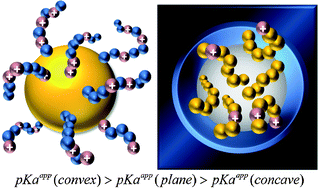This review discusses the properties of macromolecular layers on nano-curved surfaces, with special emphasis on the fast-growing field of polymer- and polyelectrolyte-modified nanopores and nanochannels. Organization in soft materials emerges from the competition between physical and chemical interactions acting on different length scales; the geometry of the system modulates this competition and, hence, dictates its structure and function. Theoretical studies of molecular organization in planar and curved geometries require the treatment of the coupling between interactions, chemical equilibrium and geometrical constraints. We analyse here how curvature affects the morphology of polymers on nano-curved surfaces and determines the apparent equilibrium constants of surface-confined chemical reactions, such as acid–base chemistry. We also review the practical implications of introducing soft materials into nanofluidic devices. In particular, we present and discuss recent theoretical studies and simulations of the transport of ions, solvent and large cargoes through polyelectrolyte-brush-modified pores. We believe that this basic understanding will guide experimental efforts towards the design of stimuli-responsive nanopore gates.

You have access to this article
 Please wait while we load your content...
Something went wrong. Try again?
Please wait while we load your content...
Something went wrong. Try again?


 Please wait while we load your content...
Please wait while we load your content...